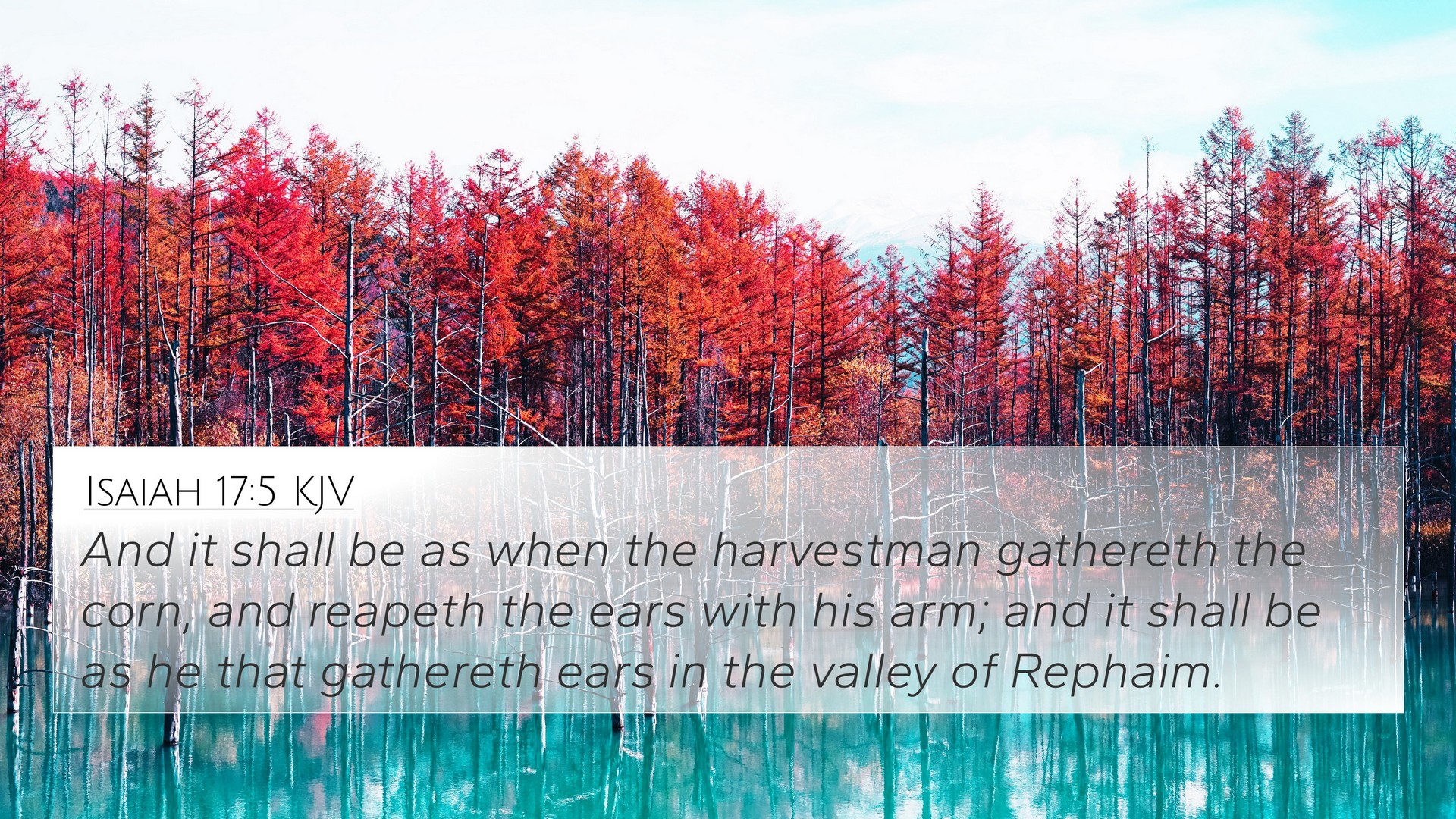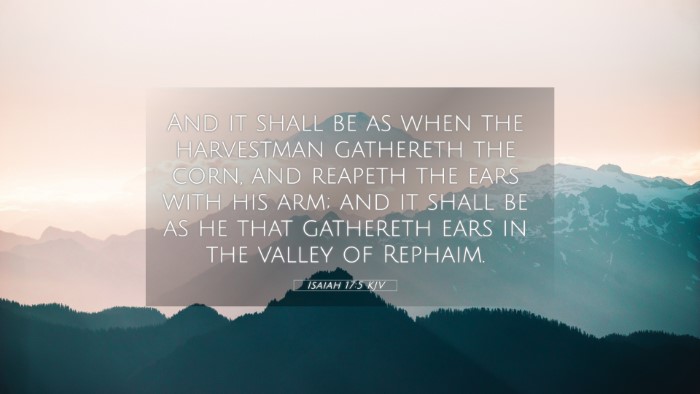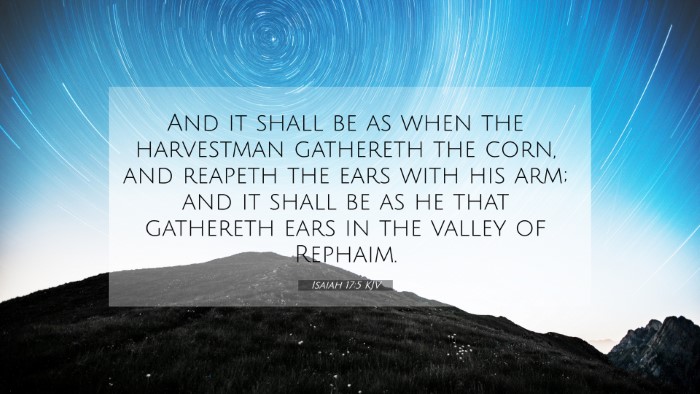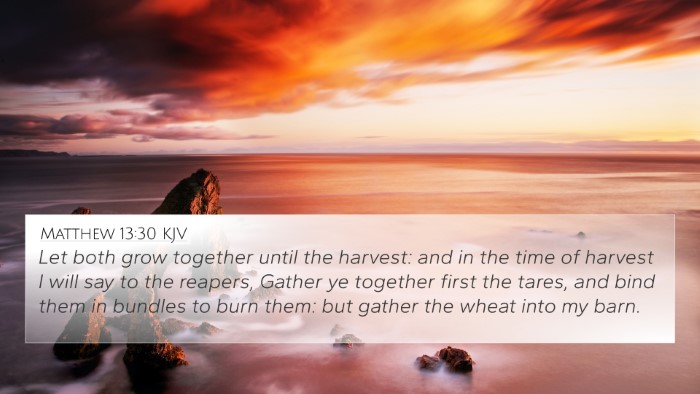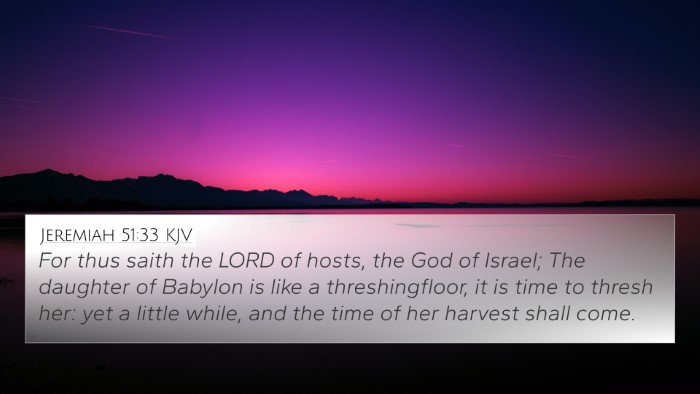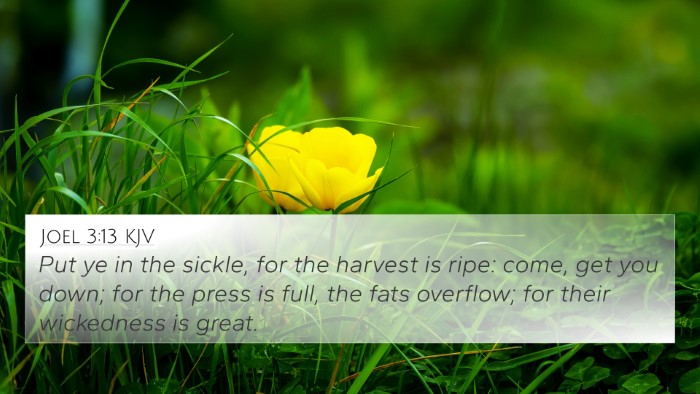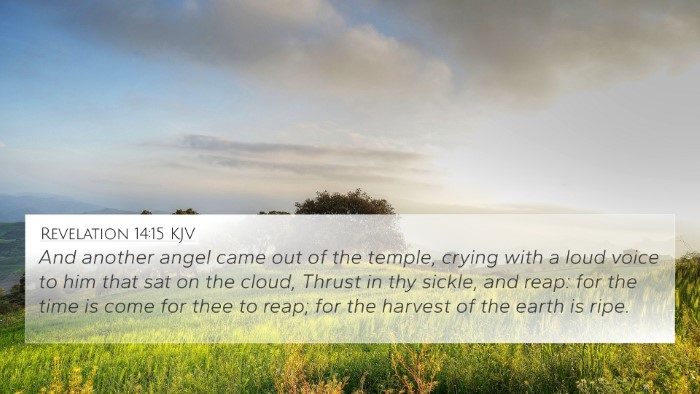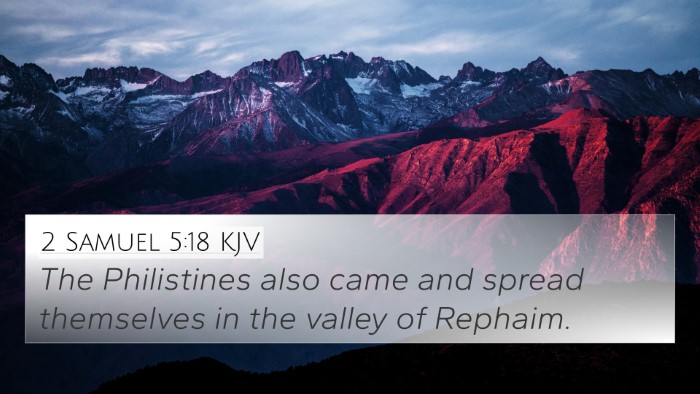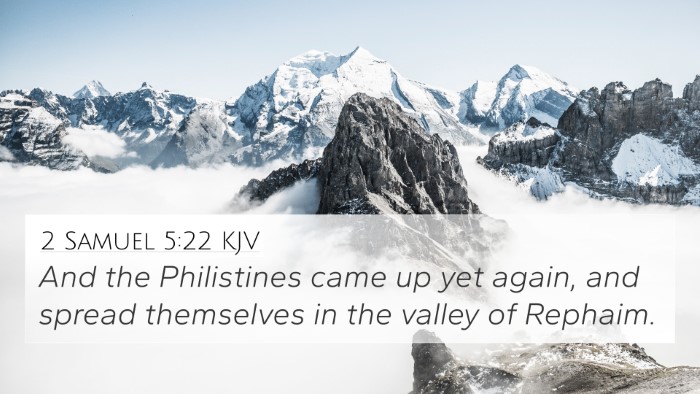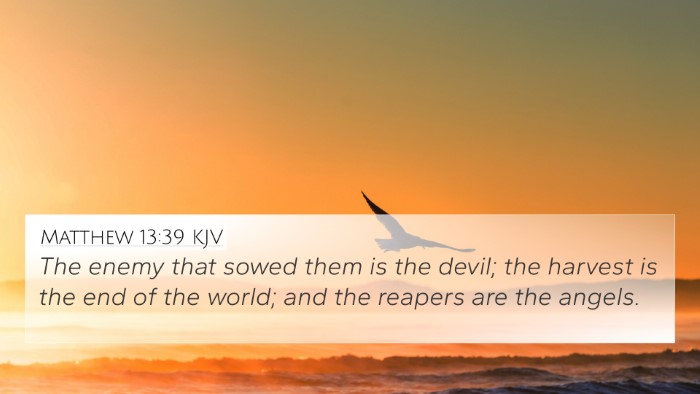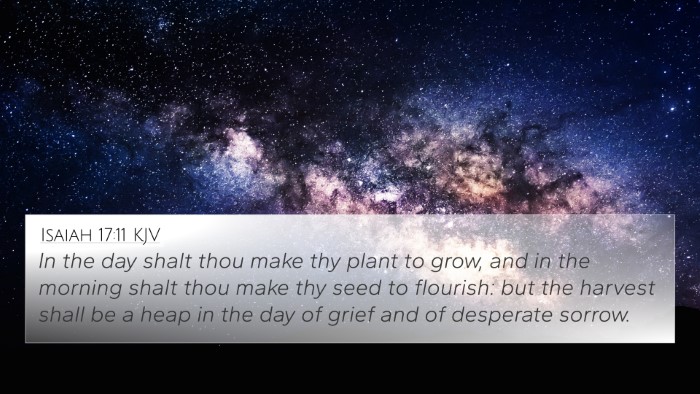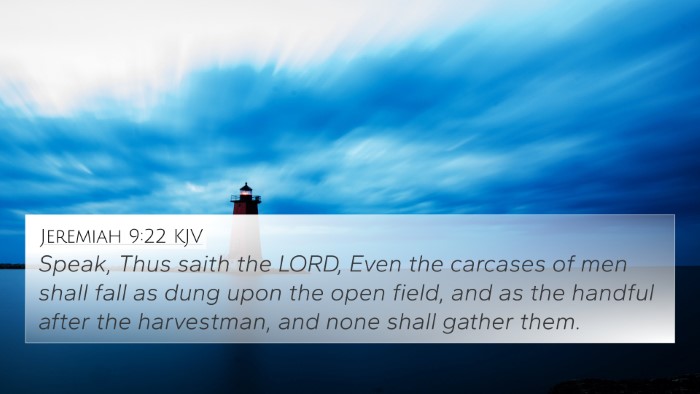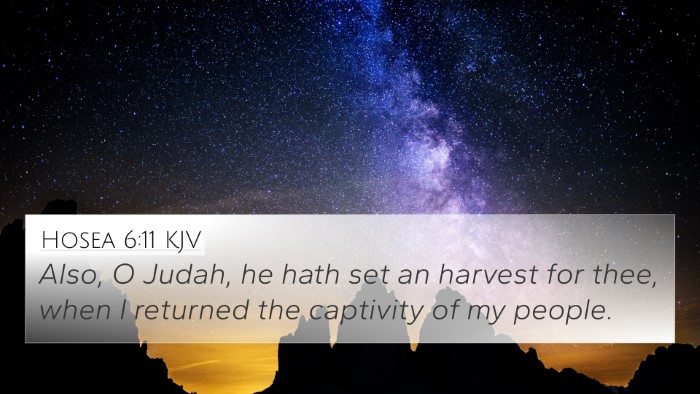Understanding Isaiah 17:5
Context of the Verse: Isaiah 17:5 states, "And it shall be as when the harvestman gathers the grain, and reaps the heads with his arm; and it shall be as he who gathers heads of grain in the valley of Rephaim." This verse is a part of the prophetic vision concerning the impending judgment on Damascus, emphasizing God's sovereign control over nations and His ability to bring about destruction in a precise and thorough manner.
Summary of Insights from Public Domain Commentaries
Insights from Matthew Henry, Albert Barnes, and Adam Clarke cumulatively reveal valuable interpretations of Isaiah 17:5. Each commentator provides nuanced understandings of the text, reflecting on themes of judgment, harvest imagery, and the sovereignty of God.
Matthew Henry's Commentary
Matthew Henry points out that the imagery of harvest is significant, symbolizing the gathering of the wicked for judgment. Just as a harvest is an unavoidable outcome of cultivation, so too will be the consequences of sin in the nations. He suggests that the "harvestman" metaphor serves to illustrate God's role in executing justice and showcasing His authority over the nations.
Albert Barnes' Analysis
Albert Barnes elaborates on the metaphorical nature of the verse, noting that it underscores a time of reckoning. He relates the gathering of heads of grain to the actions of God's judgment, where the righteous and the wicked will be differentiated. Barnes emphasizes that God’s judgment is often thorough, much like a harvest where nothing is left behind.
Adam Clarke's Commentary
Adam Clarke highlights the emotional weight of the verse, suggesting that the imagery evokes both a sense of loss and the inevitability of God's plan. Clarke connects the "valley of Rephaim" to historical events, illustrating the geographical significance in terms of battles faced by Israel. He reinforces the theme of divine retribution, implying that God's agricultural metaphors reflect the reality of spiritual truths.
Thematic Connections and Cross-References
This verse is connected to several other biblical passages, emphasizing judgment, spiritual harvest, and the sovereignty of God:
- Galatians 6:7: "Do not be deceived: God cannot be mocked. A man reaps what he sows."
- Matthew 13:30: "Let both grow together until the harvest; and at the time of harvest I will say to the reapers, 'Gather ye together first the tares, and bind them in bundles to burn them: but gather the wheat into my barn.'
- Revelation 14:14-16: The imagery of harvest is also found in the apocalyptic context as God sends His angels to reap the earth.
- Joel 3:13: "Put in the sickle, for the harvest is ripe; go, tread, for the winepress is full, the vats overflow; for their wickedness is great."
- Hosea 6:11: References to the harvest metaphor as a time of Israel's judgment and renewal.
- John 4:35: "Do you not say, 'There are still four months and then comes the harvest'? Behold, I say to you, lift up your eyes and look at the fields, for they are already white for harvest."
- Isaiah 24:13: "For thus it shall be in the midst of the land among the people, as the shaking of an olive tree, as the gleaning grapes when the vintage is done."
Significance of Cross-Referencing
The act of cross-referencing biblical texts like Isaiah 17:5 not only enhances understanding but also provides clarity on themes such as God's judgment, mercy, and His role as a reaper of souls. It helps readers see the connections between Bible verses, providing a richer, more holistic view of scripture.
Tools for Cross-Referencing Biblical Texts
Here are some tools for Bible cross-referencing:
- Bible Concordance
- Bible Cross-Reference Guide
- Cross-Reference Bible Study Tools
- Comprehensive Bible Cross-Reference Materials
- Online Bible Study Resources
Conclusion
Isaiah 17:5 serves as a powerful reminder of God's sovereignty in judgment and His role as a harvester of souls. By utilizing cross-references, readers can connect this verse to a broader biblical narrative that stresses the outcomes of human actions and divine governance. Exploring these connections enriches one's study and deepens understanding of the inter-Biblical dialogue that exists throughout scripture.
